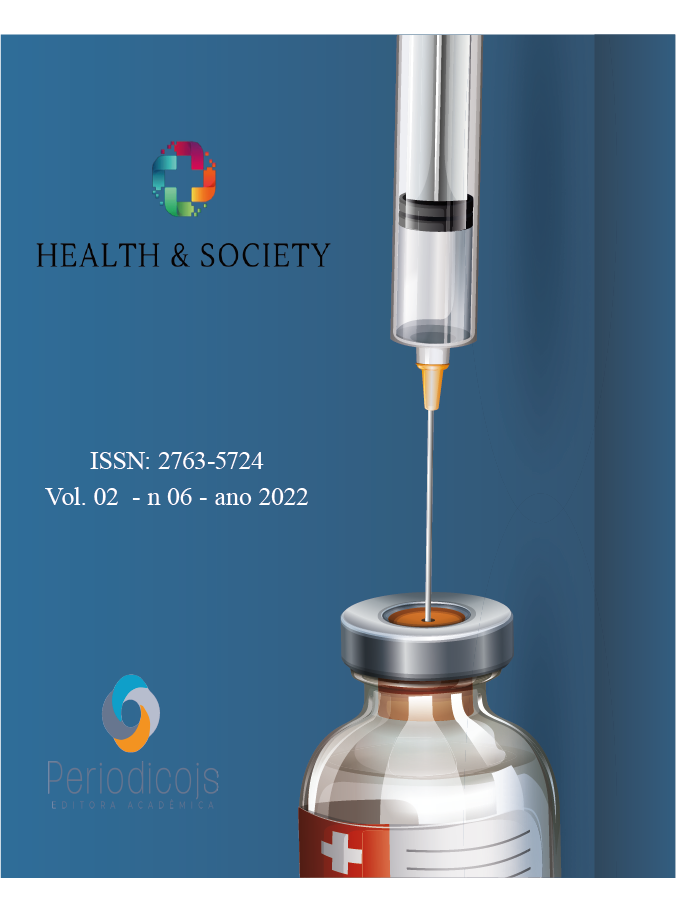Abstract
Introduction: Since the discovery of the x-ray, imaging has progressed a lot and is applied in various areas of medicine and dentistry, the latter being an area that has undergone great evolution with the introduction of radiography, which came to complement and solve doubts about the exam and allow the dentist to make a more precise assessment and conduct. Objective: To highlight the two-dimensional and three-dimensional radiographic techniques used in dentistry, emphasizing their indications, their advantages and disadvantages, as well as their relevant importance in dental practice. Methodology: This is a narrative review of the scientific literature in which data were collected through electronic searches in different databases using the descriptors Imagiology, Dentistry and Dental Imaging with the Boolean operator “AND”. Publications in Portuguese and English from the last 20 (twenty) years whose main focus was imaging applied to dentistry were used. Results and Discussion: When it comes to two-dimensional techniques, the three types of intraoral radiographs are periapical radiography, interproximal radiography and occlusal radiography. Three-dimensional techniques include computed tomography and cone-beam computed tomography. Each of these techniques has its indications, particularities, advantages and disadvantages that must always be evaluated and indicated according to the need. Conclusion: There is no doubt about the benefits that the radiographic techniques commonly used in dental practice introduce in the diagnosis, planning and treatment and in the different areas of work of the dental surgeon. It is always up to the professional to act individually with patients and evaluate the best technique to be adopted for each situation.
References
AYTÉS, L. B; ESCODA, C. G. Tratado de Cirurgia Bucal: Tomo I. 1. ed. Madrid: Engon, 2004
FREITAS, A; ROSA, J. E; SOUZA, I. F. Radiologia Odontológica. 6. ed. São Paulo: Artes Médicas, 2004.
HARINI, N. S; KRISHNAN, M. Dental computed tomography, cone-beam computed tomography - A review. Drug Invention Today, v. 11, n. 1, p. 193–200, 2019.
HUBAR, J. S; CABALLERO, P. Fundamentals of Oral and Maxillofacial Radiology. 1. ed. Lisboa: John Wiley & Sons, 2017.
JUNIOR, O. C; FENYO-PEREIRA, M; IVANOV, M; TAKAHASHI, R; SALOMÃO, G. R. Radiologia Odontológica e Imaginologia. 2. Ed. Rio de Janeiro: Guanabara Koogan, 2013.
MALLYA, S. M; LAM, E. Radiologia Oral: Princípios e Interpretação. 8. ed. Rio de Janeiro: Guanabara Koogan, 2020.
PISCO, J. M; SOUZA, L. A. Noções fundamentais de imagiologia. 2. ed. Lisboa: Lidel, 2009.
SCARFE, W. C; FARMAN, A. G. What is Cone-BeamTC and How Does it Work? Dental Clinics of North America, v. 52, n. 4, p. 707–730, 2008.
SHAH, N; BANSAL, N; LOGANI, A. Recent advances in imaging technologies in dentistry. World Journal of Radiology, v. 6, n. 10, p. 794-807, 2014.
WILLIAMSON, G. F. Best Practices in Intraoral Digital Radiography. RDH, Mississippi, v. 2, n. 1, p. 80-87, 2011.

This work is licensed under a Creative Commons Attribution 4.0 International License.
Copyright (c) 2023 Álvaro Henrique Moura Fonsêca dos Santos, João Pedro de Almeida Santos, Camila Gabrielly de Souza Moura, Leilane Ferreira Bernardo, Victória Brito de Almeida Couto, Rafael de Sousa Carvalho Saboia





